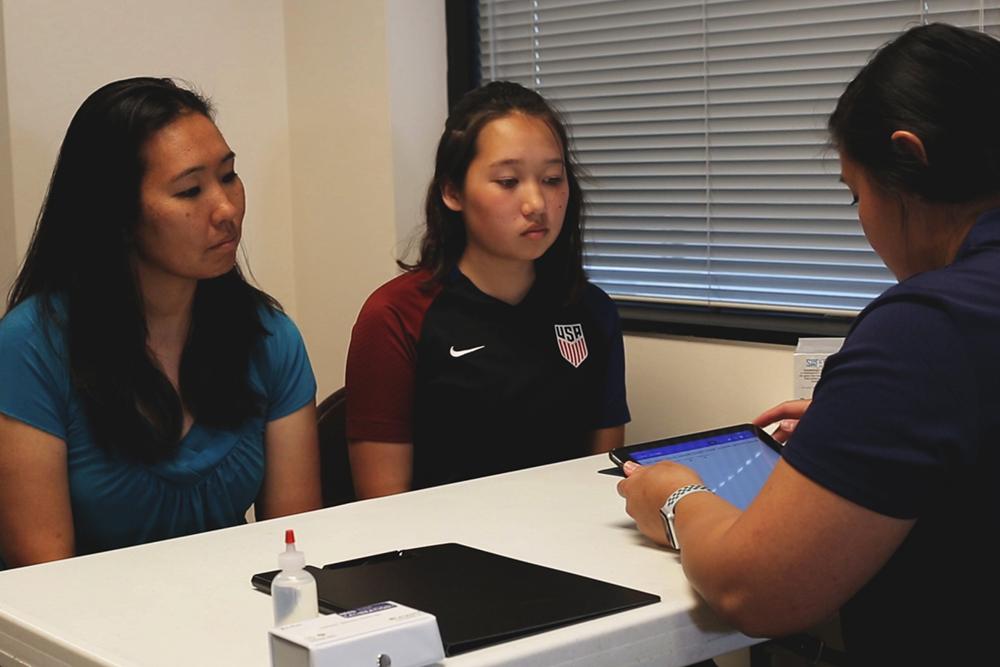As the parent of a youth athlete who is a member of a National Governing Body (NGB) of Sport, you may have heard about anti-doping, or the processes that help keep sport clean, fair, and healthy at every level of competition. Did you also know that every member of an NGB is subject to anti-doping testing?
 Not all sports organizations are NGBs, but if your son or daughter is a member of, or competes in events hosted by, a sport that has signed the World Anti-Doping Agency (WADA) Code, then he or she is subject to anti-doping rules and might be drug tested by the United States Anti-Doping Agency (USADA) or another organization.
Not all sports organizations are NGBs, but if your son or daughter is a member of, or competes in events hosted by, a sport that has signed the World Anti-Doping Agency (WADA) Code, then he or she is subject to anti-doping rules and might be drug tested by the United States Anti-Doping Agency (USADA) or another organization.
For many parents of youth athletes subject to anti-doping rules, a common question is whether their athlete can continue using prescribed medications due to the WADA Prohibited List. Concerned parents might even have their kids stop taking prescribed medications in case the use could lead to a positive test and sanction.
While it’s important to take anti-doping rules seriously, keep in mind that there are systems in place to ensure that athletes of all ages can use medications that simply return them to a normal level of health. Here are the steps parents should take to make sure their young athlete can both use necessary medications and adhere to anti-doping rules.
1. Search GlobalDRO.com
First, parents should search the medication on GlobalDRO.com, which identifies if a medication or ingredient purchased in the United States or another participating country is prohibited. You can search both the brand and the active ingredients.
If the results say the medication is not prohibited, then it can be used in sport without any restrictions. If the results say conditional, then you should read the text in the “additional information” box to determine whether your youth athlete’s use of the medication falls within the allowable guidelines.
2. Research Therapeutic Use Exemption (TUE) requirements for prohibited medications
 If Global DRO says a medication is prohibited (either in-competition only, or in and out-of-competition), then a TUE may be necessary. A TUE grants athletes permission to use a prohibited medication in sport if they have provided the required documentation and met a number of criteria. TUE applications are reviewed by medical professionals who are members of an independent TUE Committee, which must be comprised of medical experts with various areas of medical specialty.
If Global DRO says a medication is prohibited (either in-competition only, or in and out-of-competition), then a TUE may be necessary. A TUE grants athletes permission to use a prohibited medication in sport if they have provided the required documentation and met a number of criteria. TUE applications are reviewed by medical professionals who are members of an independent TUE Committee, which must be comprised of medical experts with various areas of medical specialty.
It’s important to realize that just a prescription from a physician is not enough to justify the use of a prohibited medication. More information about the TUE requirements for various conditions, such as ADD/ADHD and asthma, is available here.
3. Complete a TUE Pre-Check Form
Before applying for a TUE with USADA, remember that not all youth athletes will need a TUE for all prohibited medications. The need for a TUE will depend on the USADA TUE Policy in force at the time and on the competition level (e.g., international, national, recreational, age-group) of the youth athlete. Because it can be difficult to correctly determine competition level, USADA recommends parents (or the athlete) fill out and submit the TUE Pre-Check Form.
Once the TUE Pre-Check Form is submitted, USADA will provide written confirmation in 3-5 business days as to whether a full TUE application is required. In the meantime, USADA does not recommend that your young athlete stop taking his or her medication unless directed to do so by a doctor. USADA will assist you throughout the process if a TUE is required.
For more information on the TUE application process, visit the USADA TUE section, or contact drugreference@usada.org or call (719) 785-2000, option 2.
__________________________
Takeaway
If youth athletes are subject to anti-doping rules and using medications to return them to a normal level of health, without additional performance benefits, then they may be granted permission to continue using that medication while competing. By following these steps, your athlete can use necessary medications and comply with anti-doping rules.



